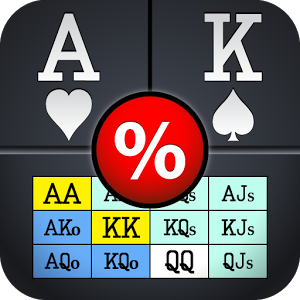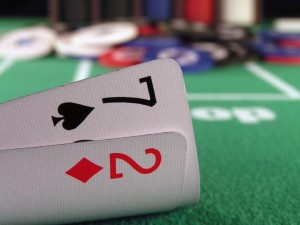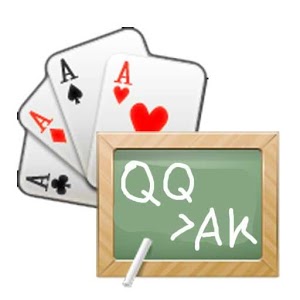To continuation-bet or not to continuation-bet
Editor’s note: What follows is an edited excerpt from Jeff Hwang’s book, Advanced Pot-Limit Omaha: Small Ball and Short-Handed Play.
When you raise before the flop and don’t get reraised, you have taken the preflop initiative, a condition that changes the dynamics of post-flop play. This is because your opponents now will check to you after the flop, expecting you to bet. As a result, your opponents will check and call with their marginal hands in order to let you bluff at the pot; worse yet, they will check-raise you far more often.
On your end, this requires finding a balance between continuation-betting and taking the free card. Where this balance lies depends on two things:
1. How many players are in the pot?
2. How tricky are your opponents?
How many players are in the pot?
Clearly, you should be more inclined to follow through with a continuation-bet (c-bet) against one opponent than two, much less three or four. The more players there are in the pot, the more players you have to make fold; moreover, the more players there are in the pot, the more likely it is that one of them hit the flop.
How tricky are your opponents?
The trickier your opponents are, the more important it is for you to check behind and take the free card more often.
For example, let’s say that you open with a raise from the button and only the big blind calls. If this player is a weak, predictable opponent who will always bet his hand, but never check and call and never check-raise, you should follow through with a continuation-bet about 100 percent of the time when he checks to you on the flop. And if, instead, this player will check and call but never check-raise, you still should c-bet the vast majority of the time, as the penalty for getting caught isn’t so steep when you are guaranteed to at least see the turn card.
That said, you should be more concerned with the tricky player, who is capable of both checking and calling and check-raising. And it is against this player that you need to balance your game by taking the free card more often. When you threaten to check behind, your opponents will be disinclined to try to check-raise you with some of their stronger hands, out of fear of giving a free card, thus making them a little more predictable.
Taking Free Cards
The next question is, when do you take the free card?
Generally speaking, you should check behind with a wider range when you have taken the preflop initiative, rather than when you haven’t. For example, when my opponent has the initiative and checks to me, I generally will check behind and take a free card when I have a gutshot-straight draw, a non-nut flush draw, or a draw to a wrap (such as when I have Q-10-9-2 on a J-5-3 flop, where a king or 8 will give me a 13-card wrap). However, I usually will bet an open-end nut-straight draw (as in Q-10-9-2 on an 8-7-3 flop), and sometimes the bare nut-flush draw, as my opponent’s check is a fairly reliable indicator that he will fold to a bet in this spot.
But when I raise preflop and have taken the initiative, I will check behind when I have an open-end straight draw — and often with the bare nut-flush draw — as I am more likely to get check-raised in this scenario. In addition, I will occasionally mix things up a bit and check behind with top pair.
Here’s an example of checking top pair:
It’s a $5-$5 game, four-handed. I am dealt the K
The turn is the K





The river is the 2






One of the benefits of checking a hand like top pair on the flop is that it effectively shortens the hand and makes it a two-street affair. Another is that it adds a little deception. In this particular hand, my opponent likely figured that I would bet a hand like top pair on the flop, prompting him to attempt a reverse float (checking and calling a bet on one street, and then leading out with a bet on a later street as a bluff) when the board paired the king and I bet on the turn.
Here’s another example of checking top pair:
It is a 50¢-$1 game on an electronic table at Excalibur. I ($200) am dealt the K
























The flop comes K


















The turn is the 8


The river is the Q






In this hand, I used position to control the hand and keep the pot size down after the flop, and checked one pair all the way through. The key to this hand is that my checking range should be wide enough to prevent my opponent from taking stabs at the pot.
If my opponent thinks that I will always bet one pair or better, or any kind of draw, he will think that I am always weak when I check, and will respond by betting anytime I check behind. But if, instead, he recognizes that I will check top pair, he will be less likely to bet on the turn if I check behind on the flop, because I am a much bigger threat to call him.
This gives me much greater control over hands in these types of heads-up confrontations when I have the preflop initiative.
Submit your review | |








